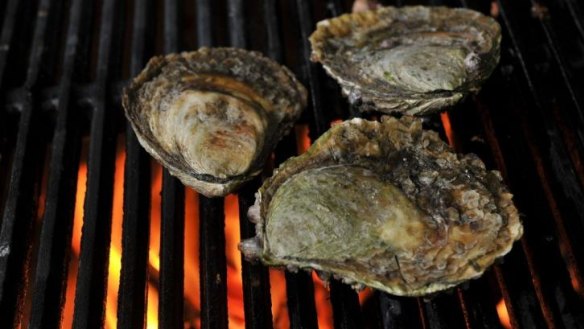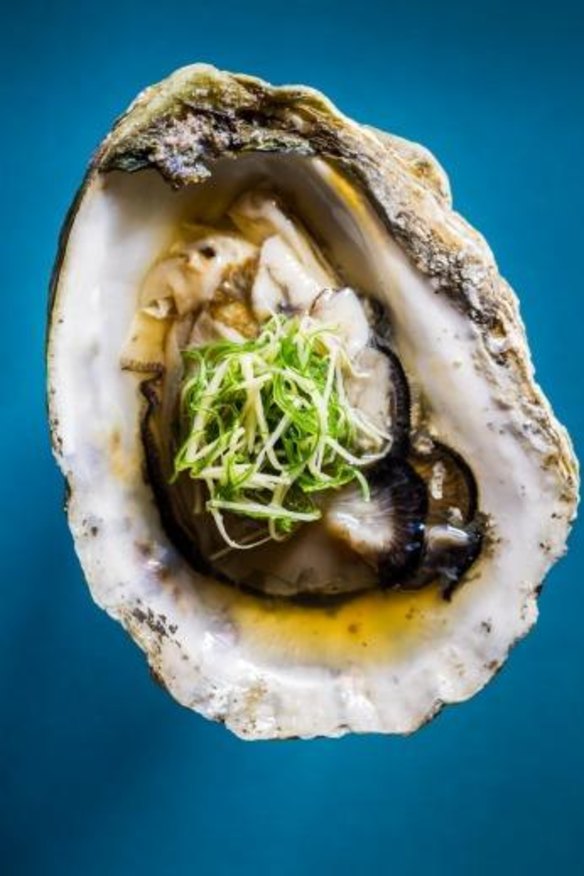How to pick the best oysters for spring

This week I'm delving into the mysterious world of molluscs where a lot of weird stuff is going down. In particular the oyster is fleetingly on my mind. A few interesting facts about oysters. Firstly they have a heart and kidneys, they can be within their lifetime both male and female. (It would be interesting to find out, if they could talk, which they preferred, I'm guessing male, cause it's grand being a bloke.) Oysters are profoundly fecund, they are the catholics of the sea world, like they literally can produce billions of offspring in a lifetime and as newly spawned plankton they swim about and have distinct legs and feet that they will use to grip on the rocks. They are filter feeders and can filter up to a 250,000 litres of water in a lifetime. And that's just five minutes' research.
During my weekend dawn raid in the regional markets I've come away with a mixture of oysters to crack open and try in a variety of ways. Is there a huge difference between the three main species that are essentially available in Australia? Going to keep it simple though, let the natural flavour of the oyster reveal itself. While I appreciate the effort, smothering them in cream and cheese or bacon and Worcestershire sauce does seem to take away the subtle differences.
Interestingly my first attempt at eating oysters came early when you could buy jars of them in brine. Mum would crumb and deep-fry them in her early attempts to make us all exotic eaters. I think it worked. I don't recall eating fresh oysters till much later but I did have a po'boy in New Orleans that was pretty spectacular and reminded me of my first attempt to swallow them.

Now, I absolutely love them. In today's net are the sweet Sydney rock oyster, surely one of the world's best: slow growing, native and abundant. Then a half dozen of the flat mud oyster, angasi: again a stunning, native yet very closely related to the French Belon. Apparently much harder to grow, as tall Paul of Tall Paul's oysters explains, they will die if exposed to fresh water, plus they are quite a bit bigger and harder to open. There are also some pacific oysters. These aren't native but are impressive just the same: they suit stronger garnishes and are the go-to bivalve for
You ever wonder what goes through an oyster's mind as you try and reef open its shell? Do they flex their muscle and grip the lid on as tight as they can? I would – you ain't getting in here, this door stays shut! Seems like that's what is happening trying to open these buggers. Not having a knight's chain-mail glove handy, this process is playing havoc with my manicure.
If you're a seasoned oyster eater – maybe not quite as big an eater as Colin Shirlow, a Northern Irishman known as the "destroyer of Dromore", a nine-year oyster eating champion who can down 233 oysters in three minutes – then there's only one way to prepare them. You have to shuck them yourself. It's one of those duties true "gourmands" have to do, a rite of passage. Having someone else do this for you is akin to having a "man" come in to your home to complete odd jobs you can't get around to finish.
To open – well, you really should know how to do this: wedge an oyster knife in to the pointy part, and twist. The lid will still be attached to the oyster, so use the edge of the knife to cut the oyster meat free, then do the same under the meat, flip it over. After a few dozen you'll be an expert or have a nice stay in hospital until your wounds heal. If in doubt have them opened in front of you, but try and keep that little bit of brine in the shell.
So you have your freshly opened oysters – what now? Well, here are a few ideas for some fairly simple ways of preparing the three species of oyster.
Sydney rock oysters
It's a crime, or it should be, to do anything much with these. Just a squeeze of lemon juice to stun them, a twist of pepper to confuse them and down the hatch to dispatch them. You really need to have this with a crisp chardonnay, a Raveneau les Clos chablis would be just so awesome or, locally, a glass of Eden Road Courabyra chardonnay is definitely in the ball park. Apparently if you order a case of this, winemakers Nick and Hamish and their team will hand deliver it on a horse-drawn cart wearing period clothing. Well, maybe not, but wouldn't hurt to ask.
Angasi oysters
Building in flavour here, much stronger and brinier (if that's a word), handles more ingredients, a mignonette dressing is pretty good, finely chopped eschalots and a drizzle good sherry vinegar. Another that impresses is very finely shredded spring onion (green part only) and ginger. Soak in iced water, drain and top the oyster with this and the merest suggestion of soy, mirin and lemon juice. A treat, yet still the oyster will be centre stage.
Pacific oysters
Now, my gift to you this fine spring day. From the first edition of the New Orleans Jazz and Heritage Festival Cookbook that has been my constant companion for almost 30 years. From Tent number two as prepared by Gilbert R. Buras – a fried oyster po'boy!
You need four plump pacific oysters per person. Roll in flour, then dredge in an egg wash, then coat with polenta. Deep-fry in fresh canola oil at 170 degrees for two to three minutes, drain on absorbent paper. Have well-buttered baguettes or slider rolls ready, filled with a little shredded lettuce, celery and red onion. Stuff with oysters and garnish with pickles, your favourite hot sauce and a squeeze of lemon juice. You are most certainly welcome.
The best recipes from Australia's leading chefs straight to your inbox.
Sign up